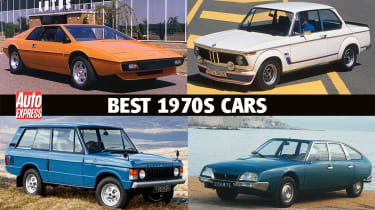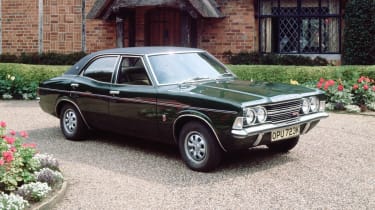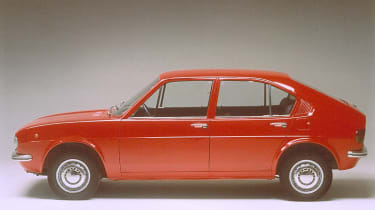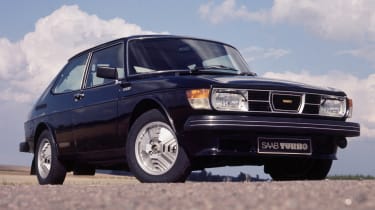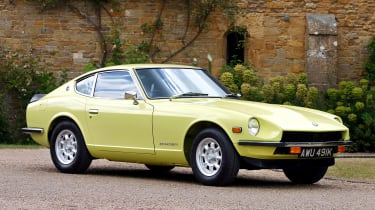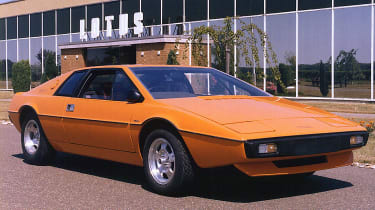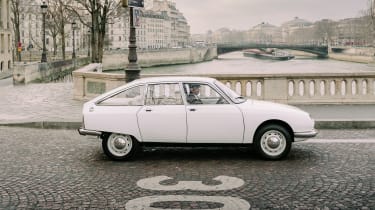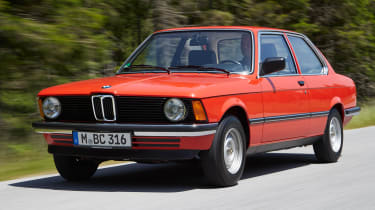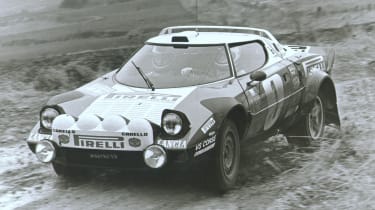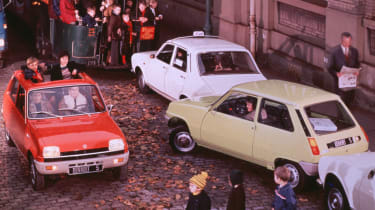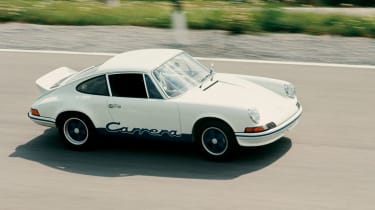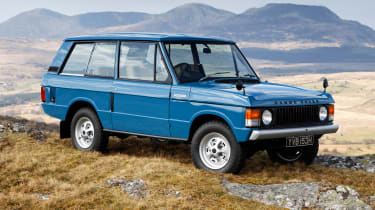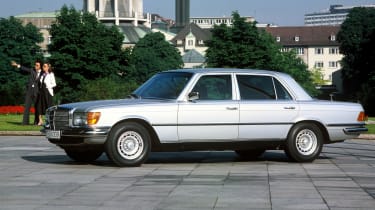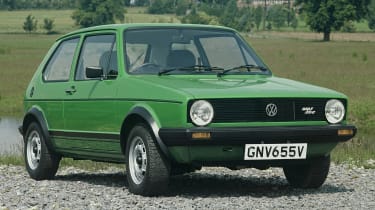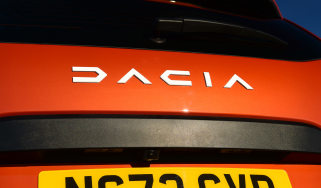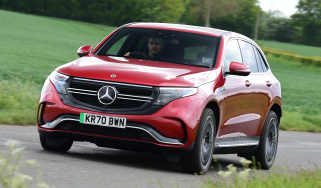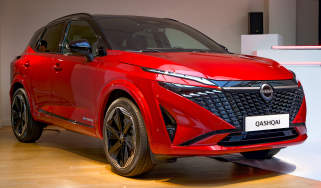Best 70s cars: 30 greatest cars of the 1970s
The 1970s was a great decade for supercars, superminis and everything in between - here are our definitive favourites
The post-war automotive industry was full of spectacular growth, innovation and financial success. British, European and American car companies were vital cogs in helping to kickstart economies and achieve renewed prosperity - employing thousands of workers and achieving enormous sales, both at home and through exporting abroad.
Great Britain, in particular, was at the centre of the motoring revival, with the Jaguar E-Type and Mini winning friends across the world. UK car production peaked at 1.92 million vehicles in 1972, but what followed was a period of rapid decline, government bail-outs, industrial unrest and turmoil. The quality of British cars was, at best, patchy, as production was interrupted by strikes.
The 1970s was also a decade of uncertainty for the American car industry, too. The 1973 oil crisis led to the decline of muscle cars as customers began looking for more fuel efficient alternatives.
But there were plenty of high points in the 70s to excite car enthusiasts. Back in Britain, the Range Rover encapsulated all that was good about the British car industry and the Rover SD1 even scooped the European Car of the Year award in 1977. What’s more, there was a true poster car from Norfolk in the shape of the Lotus Esprit Turbo and also the Caterham Super Seven - a car so successful it remains virtually unchanged to this day.
Across the channel, Europe was pumping out icon after icon as we were treated to the Mk1 Volkswagen Golf, Lancia Stratos and Citroen SM. And in Japan, the revolutionary rotary-engined sports car known as the Mazda RX-7 and the dreamy Datsun 240Z proved incredibly popular.
We've included some of the best cars of the 1970s below...
Ford Cortina
The Ford Cortina was by far and away the UK’s most popular car of the 1970s. It all started when Ford unveiled the handsome, American-influenced Mk3 at the 1970 London Motor Show. Essentially, the Mk3 replaced the Mk2 Cortina and Corsair, with Ford pinning its hopes on a larger saloon that targeted fleet and family buyers. From lowly base models to the plush GXL and 2000E versions, there was a Cortina for all budgets.
The Mk4 of 1976 was a heavily reworked version of the Mk3 but with squarer styling. This was followed by the updated Mk5 of 1979, which saw the Cortina through to the controversial launch of the Ford Sierra.
Alfa Romeo Alfasud
While the Alfasud won’t be remembered for the quality of its sheet metal or rustproofing, it was one of the most significant cars of the 1970s. Launched in 1972, the ‘Sud was built at a new Alfa Romeo factory on the outskirts of Naples in southern Italy, hence the name.
The first all-new Alfa for years featured front-wheel drive and a new range of flat-four engines. Despite having no previous experience of building front-wheel drive cars, Alfa Romeo created the benchmark for fun-to-drive small cars. The Giugiaro-designed Alfasud Coupe arrived in 1976, before the Alfasud was replaced by the Alfa Romeo 33 in 1983.
Saab 99 Turbo
Sticking a turbocharger on the humble Saab 99 was like your Auntie Agnetha swapping bingo night for a bungee jump. It transformed a safe and dependable car into a performance icon which laid the foundations for a future of turbocharged family cars. It proved that practicality and performance could go hand in hand.
Launched in 1978, the 99 Turbo breathed new life into a car with its roots in the 1960s, with four different body styles available. Here was a car that could hit 120mph and make every ‘average Joe’ feel like the original Stig (Blomqvist).
Datsun 240Z
While Britain was sleeping, Japan launched one of the most significant sports cars of the era. The Datsun 240Z was a sales sensation, most notably in America, where it outsold every European sports car. When the 240Z arrived at the beginning of the 70s, the likes of the Jaguar E-Type and MGB/C seemed like yesterday’s new. The pretty Datsun established a new order.
It became the best-selling sports car of the 1970s, with sales boosted by a bargain price tag and superb dynamics. Comparisons with British sports cars were inevitable, with the 240Z referred to as ‘The Big Healey’ and the ‘Japanese E-Type’.
Lotus Esprit
Known the world over for its starring role as ‘Wet Nellie’ in the 1977 James Bond film The Spy Who Loved Me, the Lotus Esprit was arguably one of Giorgetto Gigiauro’s finest designs. It was the company’s second mid-engined car, with power sourced from the same 2.0-litre engine as the Eclat and Elite.
Quality issues with the early cars rectified with the launch of the S2 in 1979, before the S3 arrived in 1981. However, it was the Turbo of 1980 that had the performance to secure the Esprit a place at the top table of the supercar elite.
Citroen GS
It might be a stretch to call the GS a Citroen DS for the masses, but it fully deserved its European Car of the Year award in 1971. Its arrival in 1970 signalled the start of a decade of mixed fortunes for the French company, which included near bankruptcy and the takeover by Peugeot.
Highlights included all-round powered disc brakes and self-levelling hydropneumatic suspension, while power was sourced from a range of charismatic air-cooled flat-four engines. The range included practical estate versions, although the later GSA featured a more practical hatchback body.
BMW 3 Series
The E21 of 1975 built upon the foundations laid by the BMW 2002. Developed over five years, the first BMW 3 Series arrived as a compact two-door saloon – it was the smallest and most comprehensively engineered car BMW had ever built. Early four-cylinder cars weren’t particularly quick, but few cars were as good to drive.
The 3 Series came of age in 1977 with the launch of the first six-cylinder cars. Now the 3 Series had the performance to match the chassis, most notably the 323i with its fuel-injected 2.3-litre engine. Four-door versions wouldn’t arrive until the launch of the E30.
Lancia Stratos
The Lancia Stratos was built with one purpose: to dominate world rallying. It was devastatingly effective, winning the manufacturers’ championship in 1974, 1975 and 1976, before Sandro Munari won the drivers’ championship in 1977. The Stratos was in production for just three years, but it packed a lot into a short space of time.
Power was sourced from a Ferrari Dino V6 engine, with the body based on a Bertone concept car of 1970. Homologation rules dictated that Lancia had to build 500 road cars. The company built 492, each one requiring a skilled driver to get the best from it.
Renault 5
The fact that some 5.47 million first-generation cars were built over a five-year period tells you all you need to know about the success of the Renault 5. It borrowed heavily from the Renault 4, but with the comfort and practicality you’d associate with the Renault 16. Don’t let the small dimensions fool you, because the famous 5 was spacious and practical.
Hot versions include the Alpine (badged Gordini in the UK) and the formidable 5 Turbo. The latter was a homologation special powered by a mid-mounted 1.4-litre turbocharged engine. The original R5 was replaced by the Marcello Gandini-designed ‘Superfive’ in 1984.
Porsche 911 Carrera 2.7 RS
The 911 Carrera 2.7 RS is one of the most desirable of the classic Porsche 911 models. Built to satisfy homologation rules, the 2.7 RS (Rennsport), saw the return of the famous Carrera name, first used in 1955. As the name suggests, power was sourced from a 2.7-litre engine that was powerful enough to propel the hardcore 911 to 155mph.
Highlights included wider rear arches, 7x15 Fuchs alloy wheels and a ‘ducktail’ spoiler. Side stripes were optional. Most models left the factory in the relatively lavish Touring trim, although 200 people opted for the stripped-out Sport.
Range Rover
The Range Rover is proof that the British car industry got a few things right in the 1970s. Inspired by the likes of the Ford Bronco and Jeep Wagoneer, Rover sensed an opportunity to create a similar 4x4 on this side of the Atlantic. The first Range Rover rolled off the production line in 1970. It boasted a V8 engine, four-wheel drive and all-round disc brakes.
Its hose-down and wipe-clean interior seems at odds with the Range Rover models of today, but the car brought a new level of refinement to the off-road segment. Farm by day, dinner parties by night.
Mercedes-Benz S-Class
The Mercedes-Benz S-Class was born in 1972 and was arguably the best car in the world throughout the decade. Mercedes left no stone unturned in its pursuit for perfection, with the W116 offering a compelling blend of luxury, build quality and safety. Highlights included double-wishbone front suspension with anti-dive control and ‘self-cleaning’ rear lights.
The 450 SEL 6.9 represented the pinnacle of the W116 range. The successor to the 300 SEL 6.3 featured a powerful 6.9-litre V8 engine, self-levelling hydropneumatic suspension, central locking, air conditioning, headlight wash/wipe. A top speed of 140mph was possible in absolute comfort.
Volkswagen Golf Mk1
Not many cars can claim to represent a shift in direction for a car manufacturer and the entire industry. Volkswagen had built its empire on the rear-engined, air-cooled Beetle, so the launch of the front-wheel drive, water-cooled Golf hatchback was a huge development for the German giant. It worked, with the Golf finding a million homes within the first three years.
The Giugiaro-penned masterpiece spawned further developments, including the first Golf diesel and the iconic Golf GTI. The latter may not have been the first hot hatch, but it popularised the concept of a fun and practical front-wheel drive hatchback.
Ferrari 308 GTB/GTS
By Ferrari’s high standards, the 1970s was a relatively lean period for Maranello. The BB/BBi (Berlinetta Boxer) was an effective replacement for the beautiful but dated Daytona, but the 308 GTB and GTS are arguably the finest Ferrari models of the decade.
The 308 GTB was unveiled at the 1975 Paris Motor Show and was the first Ferrari to boast a fibreglass body. A return to a conventional steel and aluminum construction followed, before the launch of the open 308 GTS in 1977. The GTS, made famous by Tom Selleck in Magnum P.I., was the big seller.
Click here to check out part two of our list of the 30 greatest 1970s cars...
What about the decades before and after? Find out below...
